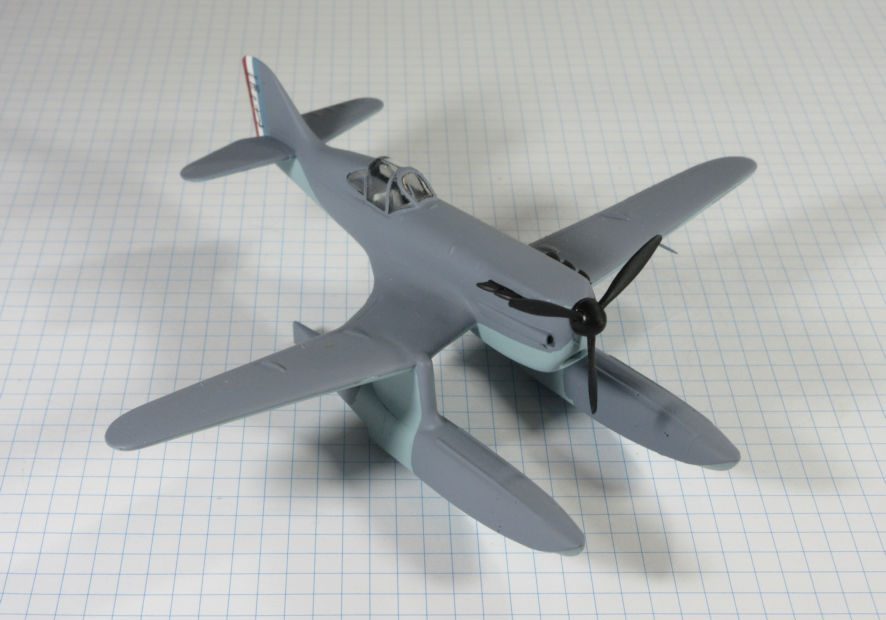One of the things that makes going to Swap n Sells worthwhile is what you find lurking in the boxes of leftover stuff that dealers often have under their tables. You can’t get to them straight away because there are too many bodies pressed together trying to find bargains on the tables themselves, but later on when the crowd has diminished it is time to ferret around in those boxes of odd bits and pieces.
That’s where I found the strange little kits that enabled me to make two conversions to your standard Dewoitine 520 fighter. One of these little finds was the A+V 1/72 kit of the Dewoitine 520DC and the other was the CMR Dewoitine 780. Both were full resin kits but both were at least twenty years old and not very good. Fortunately, I had a couple of not much younger Hobby Boss Dewotine 520s that I could use as donor kits. The more recent RS kits of the Dewoitine 520 are better than the Hobby Boss ones but they are also more fragile and it looked at though converting these kits to make the two deviant Dewotines was going to require a lot of tough handling. Besides, if something went wrong and the kits ended up in the bin, I wouldn’t feel so guilty if they were the Hobby Boss ones.
The Dewotine 520DC was a post war conversion of the standard fighter. Seventeen surviving Dewoitine 520s were gathered up in July 1945 and used for pilot training and, to make training easier, one was converted to dual control (‘double commande’) by the simple expedient of putting a second seat in the space behind the cockpit, installing controls and extending the canopy. Subsequently another thirteen were converted in the same way and the last ones probably flew until around 1953.
The A+V kit of the Dewotine 520DC has almost nothing to recommend it. In comparison to more recent resin kits this one is poorly defined with poor details. In addition to the resin there were some blobby white metal undercarriage legs and a couple of instrument panels for the cockpit, but no decals, and the instruction sheet is only a three view drawing of the aeroplane you are supposed to make from the resin parts. Lord help any novice modeller wanting to make a models out of this kit. After a little consideration I decided that the only parts of the kit that were useable were the instrument panels and the vacformed canopy, and then only marginally.
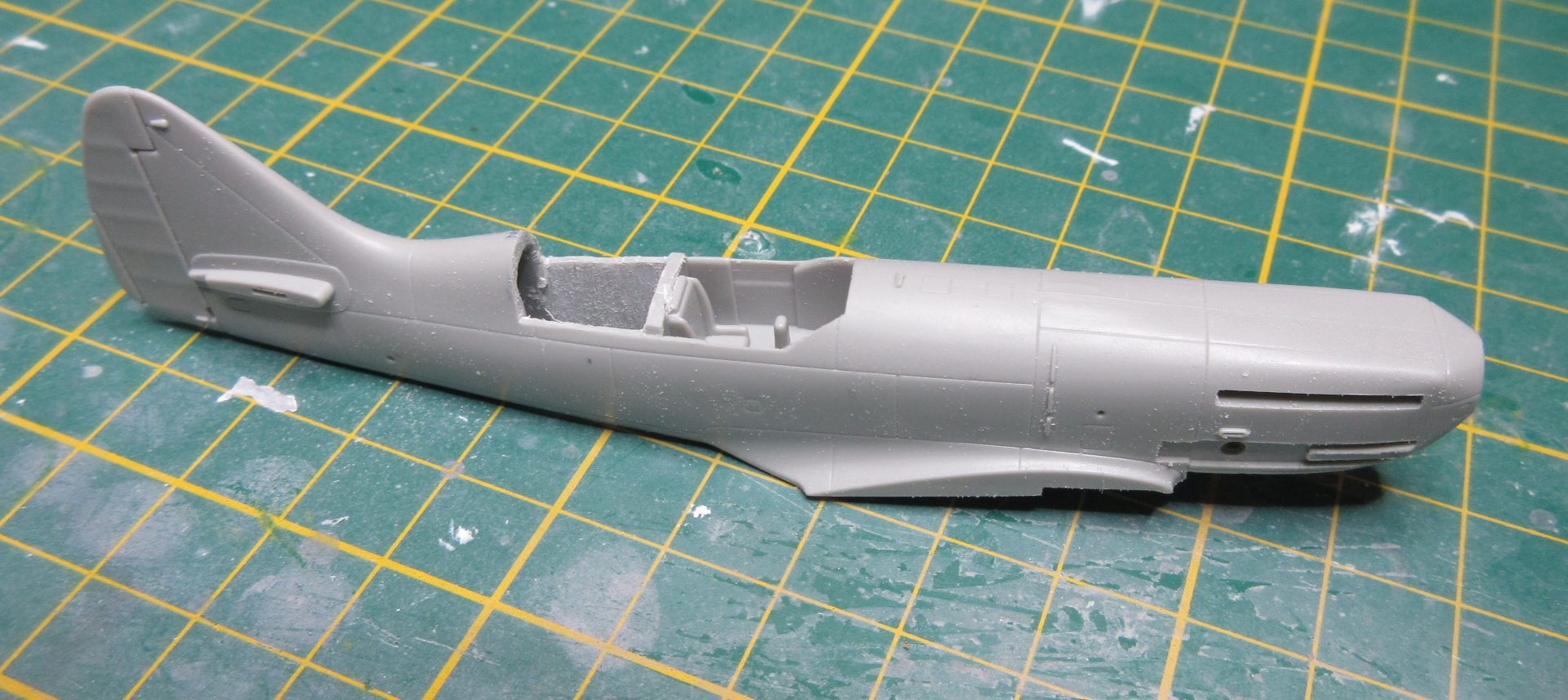
The conversion was fairly simple and involved removing the upper rear fuselage with a razor saw. Before doing this I had to liberate the cockpit canopy from its celluloid, always a tense few minutes made worse this time because the kit did not provide two canopies just in case, as is customary these days, and because, unlike many vacformed canopies, the shape of this one was not well defined and thus needed a lot of careful trimming and test fitting was necessary before it was ready for use.
The reason for doing the canopy first was, of course, to find out how much of the rear fuselage to remove. The plastic in that Hobby Boss kit is very thick so a great deal of thinning ensued to make room for the kit second pilot seat but it was a while before I realized that the kit seat was wider than the fuselage itself so a scrounge through the spares box found a replacement that promised to actually fit. The kit instrument panels fitted nicely and I added in a couple of other things to make the cockpit look busy which, of course, you can’t see in the finished model. The canopy needed a struggle before it was presentable and, after that, the rest of the kit went together as expected.
I was able to find a few photos of Dewoitine 520DCs on the interweb and they all looked to be in fairly poor condition and bare metal. Tamiya AS-12 Bare Metal Silver works well for this. Decals came from the spares box. I have a goodly selection of decals from wartime 520s but it seems that the French went for a deeper blue in their markings after the war so finding what was needed took a bit of searching. None of the photos I’ve seen had any unit markings, which was a blessing.
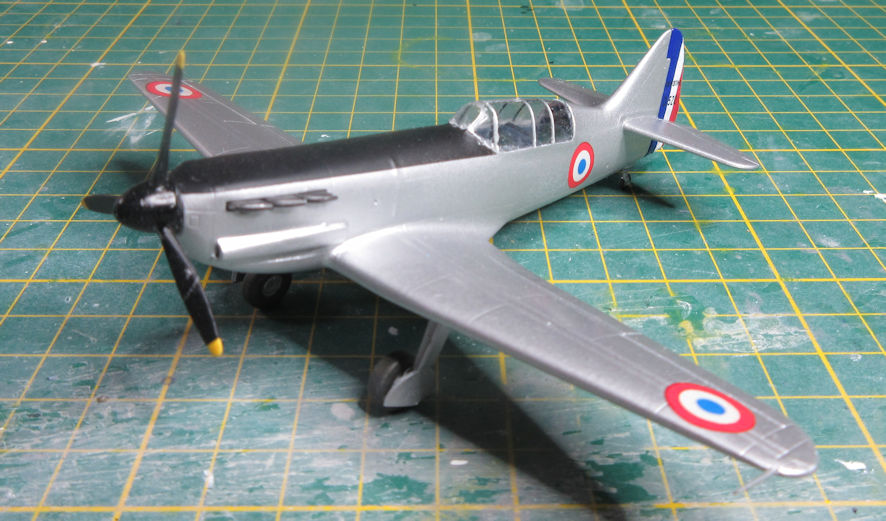
The Dewotine 780, more properly the HD.780, was a floatplane fighter designed to meet a 1937 French air ministry requirement for a floatplane fighter that could be used from shore bases and from ships. The Dewotine 520 was the basis for the new design but in order to make a floatplane from it the aeroplane needed a new nose which incorporated the radiator, a cranked wing for the floats and an enlarged tail. The prototype was ready for flight by March 1940 but by then the French had other concerns so it sat, waiting, until the Germans arrived, looked at it and ordered it to be turned into scrap without it having even flown.
If I thought the A+V kit was terrible and of little use, the CMR kit was even worse, on two counts. One was that the moulding was not very good and would need a lot of work to make it useable. The second was that in many ways it didn’t look much like a Dewoitine 780. This may be understandable since any drawings you find of it on the interweb show a Dewoitine 520 fuselage attached to a cranked wing and floats, ignoring the fact that the nose had been enlarged to accommodate the radiator (its existing location under the mid fuselage would not have been very good for a floatplane) and the tail showed no signs of enlargement. My guess is that the fuselage for this kit had been copied from the old Heller kit and would have needed severe improvement and modification to be of any use. Consequently the only really useable parts from the kit were the wings and floats and I decided that it would be easier to convert the fuselage from the Hobby Boss kit with a new nose and tail and the CMR wings and floats to it.
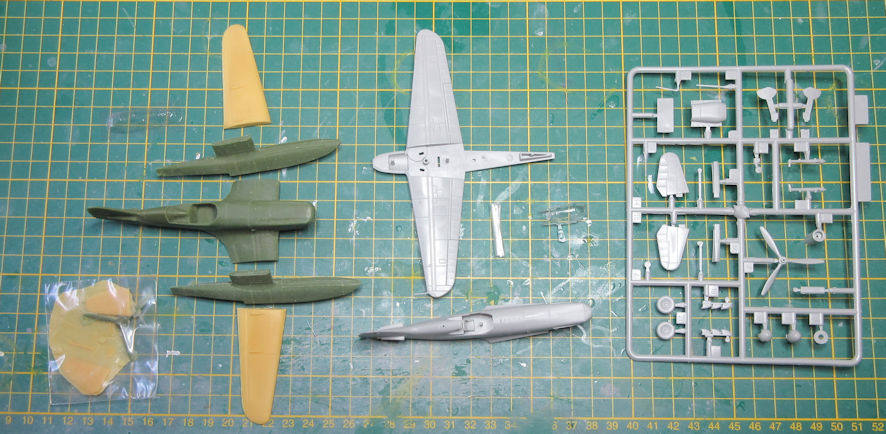
The trickiest part of this conversion was finding a way of mating the central fuselage and inner wings of the CMR kit with the Hobby Boss fuselage. It was not a simple matter of mating the wings from one kit onto the fuselage of the other because the wing fillets on the Dewoitine 780 were bigger and of a different shape to the Dewoitine 520 wing fillets. Doing this involved a lot of work with a saw and then grinding down the central fuselage of the resin kit with my trusty Dremel (the biggest work-out it’s had in years) while wearing the appropriate protection because there was resin dust everywhere. Eventually enough of the resin had been turned into dust that the Hobby Boss fuselage slipped into the void, and then there was a lot of filling to do.
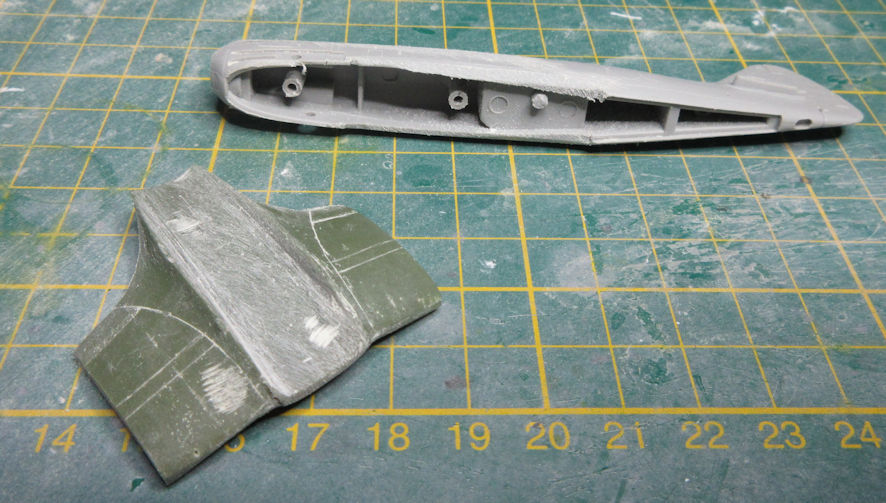
My first attempts at the nose and tail were unsatisfactory because there were no plans to guide me and I did not peer carefully enough at the few photos I could find. After a few hours stuffing around I tried again, this time by cutting the rudder off the kit and replacing it with one made out of plasticard and gluing the radiator from the Hobby Boss kit under the nose and then surrounding everything with a big blob of two-part epoxy putty and then carefully sanding it away until I had a shape that look fairly much like what the photos told me. I’m not sure that I’ve got the shape of the tail or the nose exactly right but I doubt anyone is going to do better with the evidence I had available to me.
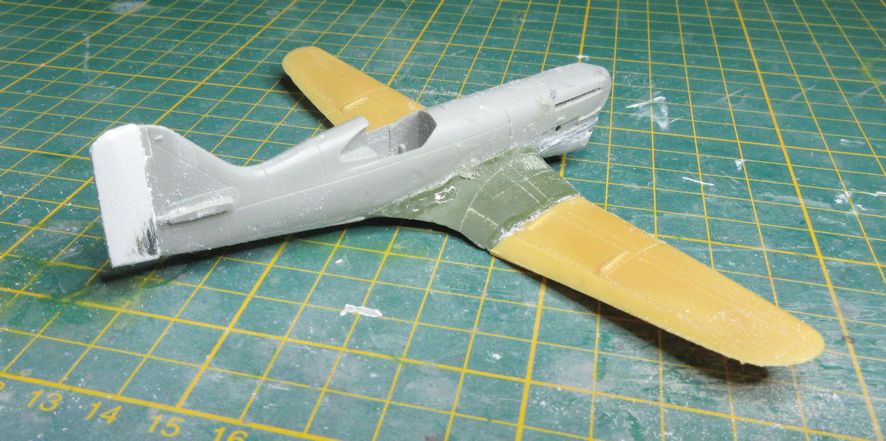
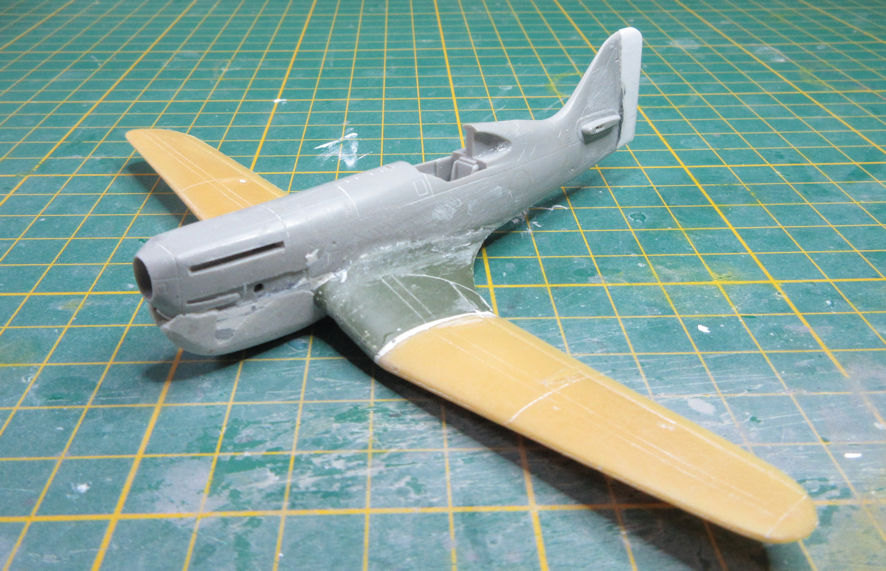
Having got the overall shape of the aeroplane as good as I thought possible, a great deal of filling and sanding followed to fill gaps and disguise other modelling indiscretions. There are a number of imaginative side view colour schemes for the Dewotine 780 on show on the web but as far as I can tell from the available photos the only markings on the real aeroplane was the traditional data on the rudder. I’m guessing that the aeroplane was painted only in the two tone Bleu Gris Fonce and Clair scheme which seems to have been the basis of many Aeronavale schemes around this time.
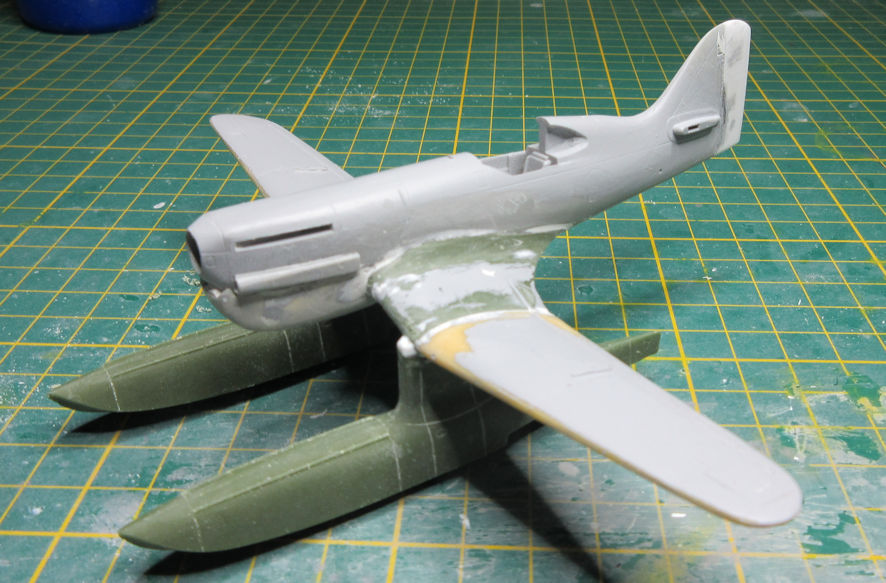
I don’t suppose there would be too many people interested in making these conversions. Even without the A+V kit is would not be too difficult to make the Dewotine 520DC but it was not flown in a very attractive colour scheme that people would find attractive. As for the Dewoitine 780, there would be too much scratch building for most people if the CMR kit was not available, and probably too much work for most modellers even if they had that kit to hand. But then I don’t have very ordinary modelling tastes, I guess.
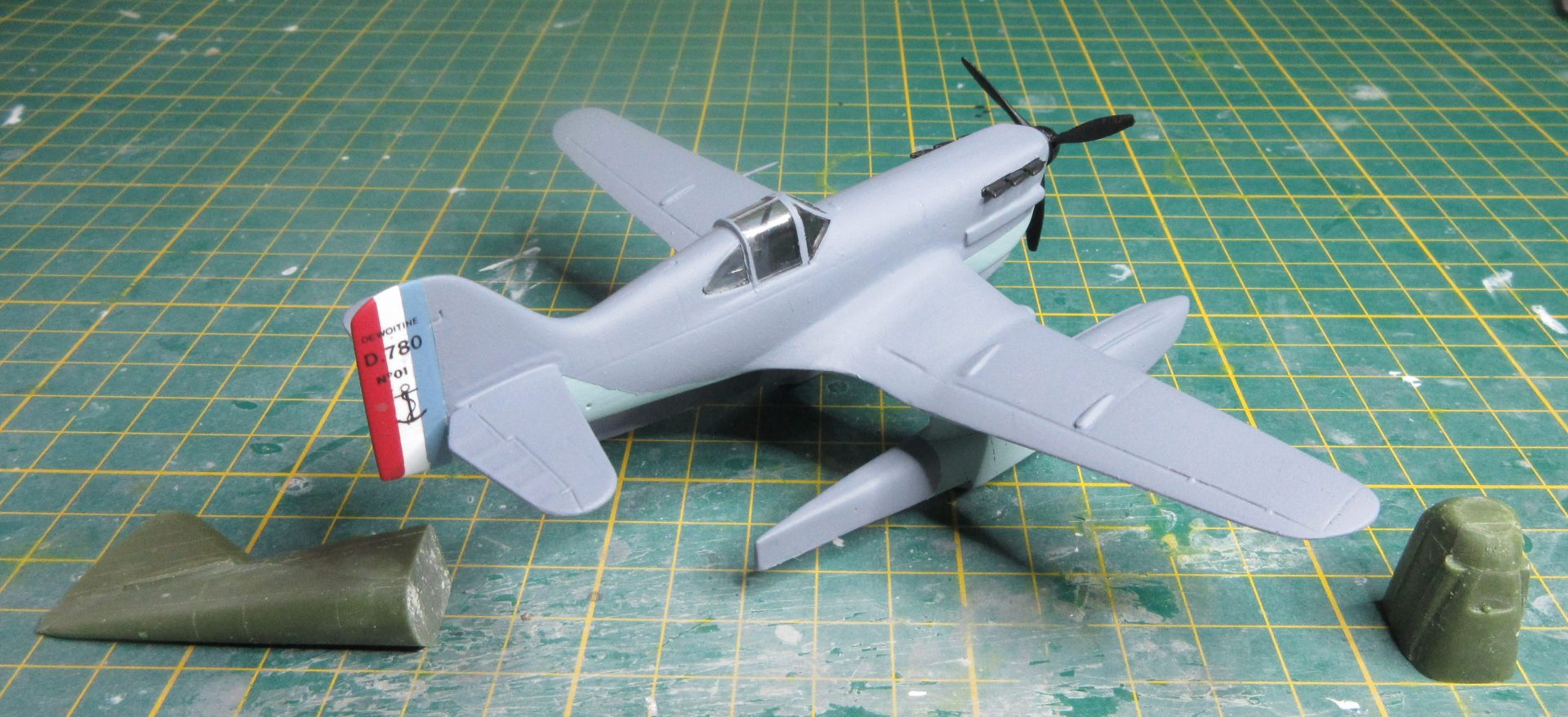
Leigh Edmonds
April 2020

